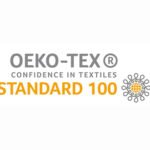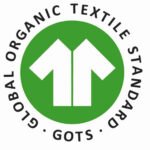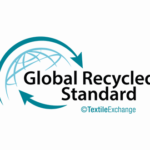Custom Bras
Elevate Your Brand with Vacodo:
Your Premier Bras Partner

As a leading bra manufacturer, distinguishes itself as the premier choice for discerning businesses seeking unparalleled flexibility, control, and comfort in their products. Our commitment to excellence shines through our meticulous material development process, ensuring superior quality and satisfaction.
We pride ourselves on being more than just a manufacturer; we are partners in your success. Whether you're launching a new business or expanding your brand, we're dedicated to helping you realize your vision. By collaborating closely with clients and companies, we harness their ideas and aspirations to craft authentic and enhanced product lines. Together, we propel brands forward, transforming dreams into tangible success stories. Trust Vacodo to elevate your brand to new heights.
We pride ourselves on being more than just a manufacturer; we are partners in your success. Whether you're launching a new business or expanding your brand, we're dedicated to helping you realize your vision. By collaborating closely with clients and companies, we harness their ideas and aspirations to craft authentic and enhanced product lines. Together, we propel brands forward, transforming dreams into tangible success stories. Trust Vacodo to elevate your brand to new heights.
Materials of custom bras

Satin:
Satin bras have a luxurious feel and a shiny finish, making them perfect for special occasions or when you want to add a touch of glamour to your lingerie wardrobe.
Microfiber:
Microfiber bras are known for their softness, smooth texture, and ability to wick moisture away from the skin, making them comfortable for all-day wear.
Silk:
Silk bras are prized for their luxurious feel and natural hypoallergenic properties. They are gentle on the skin and offer a smooth, silky texture.
Jersey:
Jersey bras are made from a knit fabric that is soft, stretchy, and comfortable, making them suitable for loungewear and everyday wear.
Cotton:
Known for its softness and breathability, cotton bras are comfortable to wear for everyday use.
Spandex/Elastane:
This stretchy material is often blended with other fabrics to provide flexibility and support, especially in sports bras and activewear.
Nylon:
Nylon bras are durable, lightweight, and quick-drying, making them ideal for active lifestyles and warm weather.
Polyester:
Polyester bras are known for their strength, durability, and resistance to wrinkles and shrinkage. They often provide a smooth and sleek appearance under clothing.
Lace:
Lace bras add a touch of elegance and femininity to lingerie collections. They are often used as decorative overlays or accents on bras.
Mesh:
Mesh bras offer breathability and ventilation, making them suitable for hot and humid climates or intense physical activities.
Types of custom bras

T-shirt Bra
Designed with smooth, seamless cups, t-shirt bras are ideal for wearing under fitted clothing as they provide a sleek and invisible look.

Push-up Bra
Push-up bras feature padded cups and angled padding along the bottom or sides to lift and enhance the cleavage, creating a fuller and more defined bustline.

Sports Bra
Sports bras are specifically designed to provide support and minimize breast movement during physical activities. They often feature moisture-wicking fabrics and a compression or encapsulation design.

Wireless Bra
Wireless bras do not have underwire and rely on specialized construction and fabric for support. They offer a comfortable alternative to traditional underwire bras.

Underwire Bra
Underwire bras feature flexible wires sewn into the underside of the cups to provide additional support and shape to the bust.

Balconette Bra
Balconette bras have wide-set straps and horizontal cups that lift the breasts and create a rounded shape, making them ideal for low-cut tops and dresses.

Plunge Bra
Plunge bras have a deep V-shaped neckline that enhances cleavage and is designed to be worn with low-cut tops and dresses.

Convertible/Multiway Bra
Convertible bras feature detachable straps that can be worn in multiple configurations, allowing for versatility in styling and outfit choices.

Strapless Bra
Strapless bras are designed with no shoulder straps, making them ideal for wearing with strapless or off-the-shoulder tops and dresses.

Racerback Bra
Racerback bras have straps that come together in the back in a Y or T shape, providing additional support and stability, particularly during physical activities.

Full Coverage Bra
Full coverage bras offer maximum coverage and support, with cups that fully encase the breasts and provide a secure fit.

Maternity/Nursing Bra
Maternity and nursing bras are specially designed to accommodate changes in breast size during pregnancy and breastfeeding, with features such as adjustable straps and drop-down cups for easy access.
How to customize your bras
4 steps to customize your bras

1. Send your inquiry
Tell us your ideas or send product pictures, URLs, design drawings, etc. We’ll confirm with you lingerie styles, colors, sizes, fabrics, accessories, and so forth in detail.
2. Develop lingerie samples
Make the sample and send it to you. You can evaluate the lingerie quality and overall effect. Tell us your suggestions. Then, we modify it.
3. Start mass production
Place an order once you approve the sample. Then, we go to mass production and production follow-up.
4. Carry out QC before shipping
Conduct AQL sampling or one-by-one inspection before your items are shipped to your place as negotiated.
manufacturing process of bras

Design and Development:
The process begins with designing the bras according to market trends, customer preferences, and functional requirements. Designers create sketches and technical drawings, considering factors such as style, fit, support, and fabric choice.
Material Selection:
Once the design is finalized, manufacturers select the appropriate materials for the bras. This may include fabrics such as cotton, nylon, spandex, lace, or satin, as well as other components like elastic bands, underwire, hooks, and adjustable straps.
Pattern Making:
Patterns are created based on the design specifications, which serve as templates for cutting the fabric. Pattern makers use specialized software or manual techniques to draft the patterns accurately, ensuring proper fit and construction.
Fabric Cutting:
After the patterns are made, the fabric is laid out in layers, and the patterns are placed on top. Using cutting machines or hand tools, workers cut the fabric according to the pattern shapes, ensuring precision and minimizing waste.
Sewing and Assembly:
The cut fabric pieces are then assembled together using sewing machines and techniques specific to each bra style. This includes stitching seams, attaching straps and closures, inserting underwire or padding, and adding embellishments like lace or embroidery.
Quality Control:
Throughout the manufacturing process, quality control inspectors monitor each step to ensure that the bras meet the specified standards for fit, construction, and appearance. Any defects or inconsistencies are identified and addressed promptly to maintain product integrity.
Finishing Touches:
After the bras are assembled, they undergo finishing touches such as trimming loose threads, pressing to remove wrinkles, and inspecting for any final adjustments needed. Labels, tags, and packaging are also added to prepare the bras for shipment.
Packaging and Shipping:
Once the bras have passed final inspection, they are packaged according to customer requirements, whether for retail sale or wholesale distribution. They are then shipped to retailers, warehouses, or directly to customers, ready to be worn and enjoyed.
Feedback and Iteration:
Manufacturers often gather feedback from customers and retailers to continuously improve their products and processes. This feedback loop helps identify areas for refinement and innovation, ensuring that the bras meet evolving market demands and consumer preferences.
inspection of custom bras

Visual Inspection:
Inspectors visually examine each bra for any defects, irregularities, or inconsistencies in stitching, fabric, seams, and overall construction. This includes checking for loose threads, uneven stitching, fabric flaws, and misaligned components.
Fit and Measurement Checks:
Inspectors verify that the bras meet the specified measurements and fit requirements, including cup size, band size, strap length, and overall dimensions. They may use measuring tools such as rulers, tape measures, and size charts to ensure accuracy.
Functional Testing:
Inspectors conduct functional tests to assess the performance and functionality of the bras. This may include testing the elasticity and durability of straps and bands, checking the functionality of closures such as hooks and clasps, and evaluating the support provided by underwire or padding.
Quality of Materials:
Inspectors assess the quality of materials used in the bras, including the fabric, elastic, underwire, and other components. They check for issues such as fabric pilling, discoloration, fraying, or defects in the hardware.
Labeling and Packaging Inspection:
Inspectors ensure that each bra is correctly labeled with size tags, care labels, brand labels, and other required information. They also check the packaging for accuracy, completeness, and any damage that may have occurred during handling or storage.
Random Sampling:
In addition to inspecting each individual bra, inspectors often conduct random sampling of finished products to ensure that quality standards are consistently met across the entire production batch.
Documentation and Reporting:
Inspectors document their findings and observations, recording any defects or issues identified during the inspection process. This documentation provides valuable feedback to manufacturers for process improvement and corrective actions.
Final Approval:
Once the inspection is complete and any necessary adjustments or corrections have been made, bras that meet the required quality standards are approved for shipment to customers or retailers.
certifications

OEKO-TEX Standard 100
This certification ensures that textiles and fabrics used in bras meet strict human-ecological requirements and are free from harmful substances.

ISO 9001
ISO 9001 certification indicates that a manufacturer has implemented a quality management system to consistently provide products that meet customer and regulatory requirements.

ISO 14001
ISO 14001 certification demonstrates that a manufacturer has implemented an environmental management system to minimize the environmental impact of its operations, including the production of bras.

BSCI
BSCI certification verifies that a manufacturer adheres to ethical standards and social compliance requirements, including labor rights, health, safety, and environmental protection.

GOTS
GOTS certification ensures that bras made from organic fibers meet stringent environmental and social criteria throughout the entire production process, from harvesting to manufacturing.

GRS
GRS (Global Recycling Standard) is an international recycled materials standard designed to ensure that recycled materials are traceable, recyclable and sustainable throughout their supply chain. The standard applies to any product containing at least 20% recycled materials, including textiles, plastics, paper, etc.

CE
CE marking indicates compliance with European Union directives and regulations, ensuring that bras meet health, safety, and environmental protection standards for sale in the EU market.

REACH
REACH compliance ensures that bras meet regulations for the safe use and handling of chemicals in the production process.
